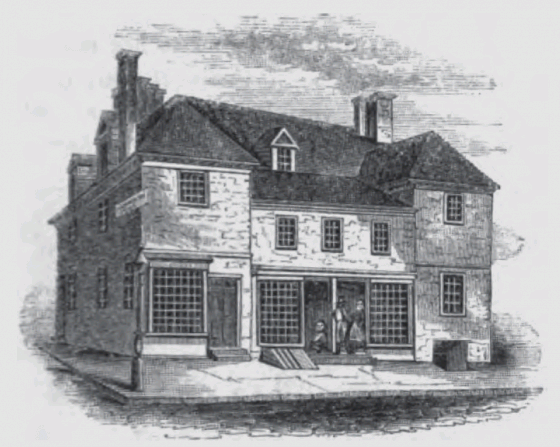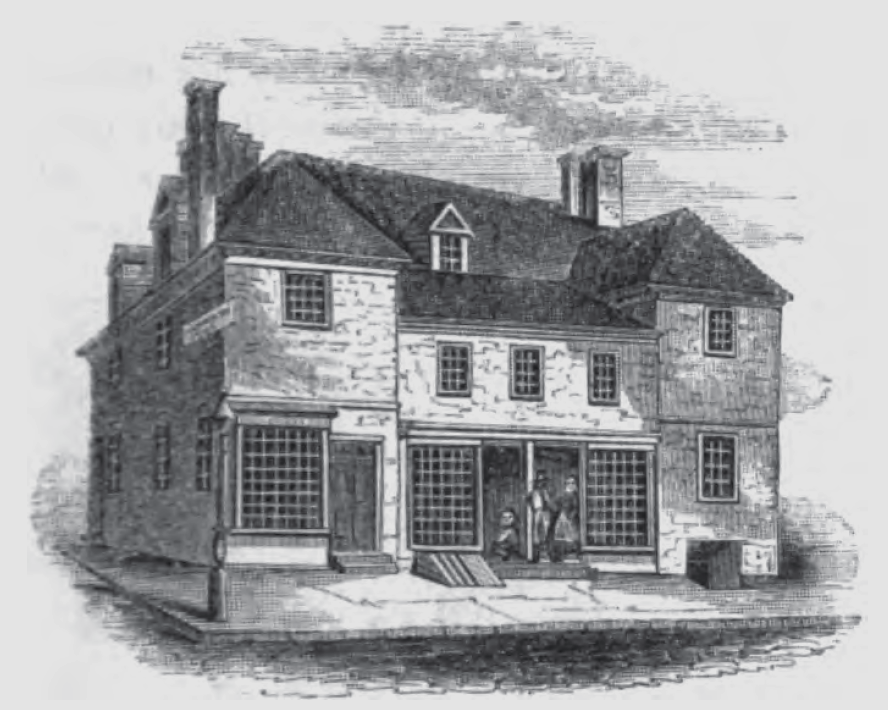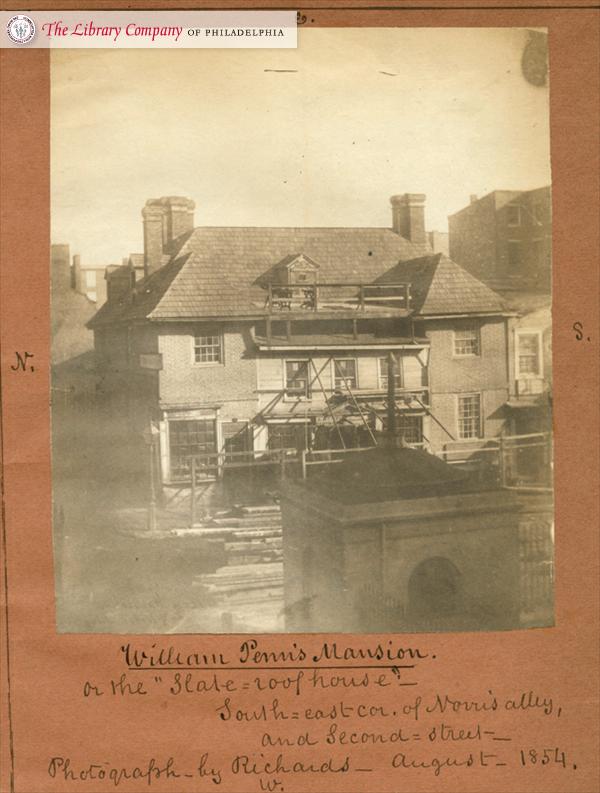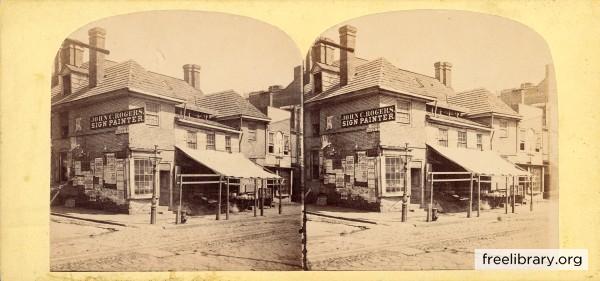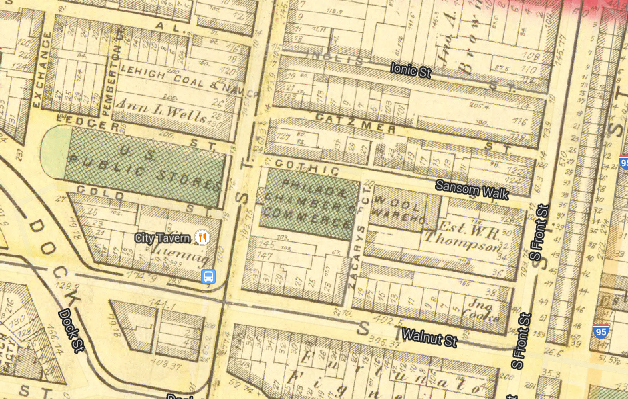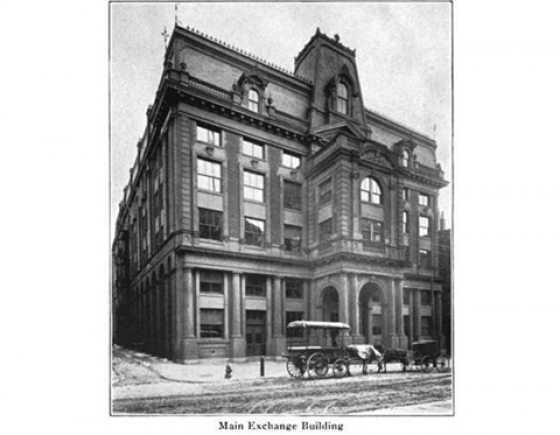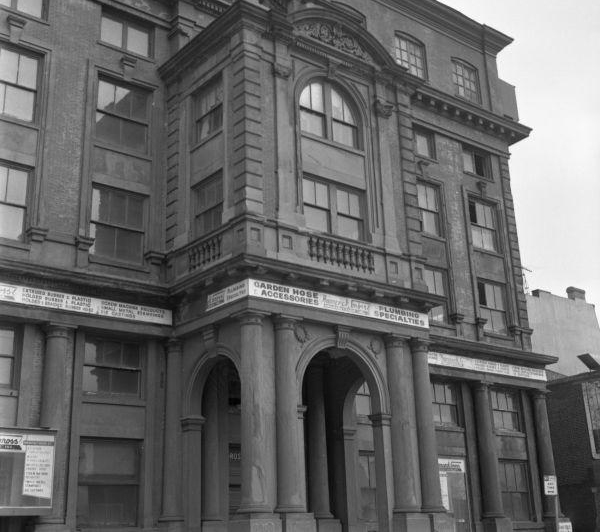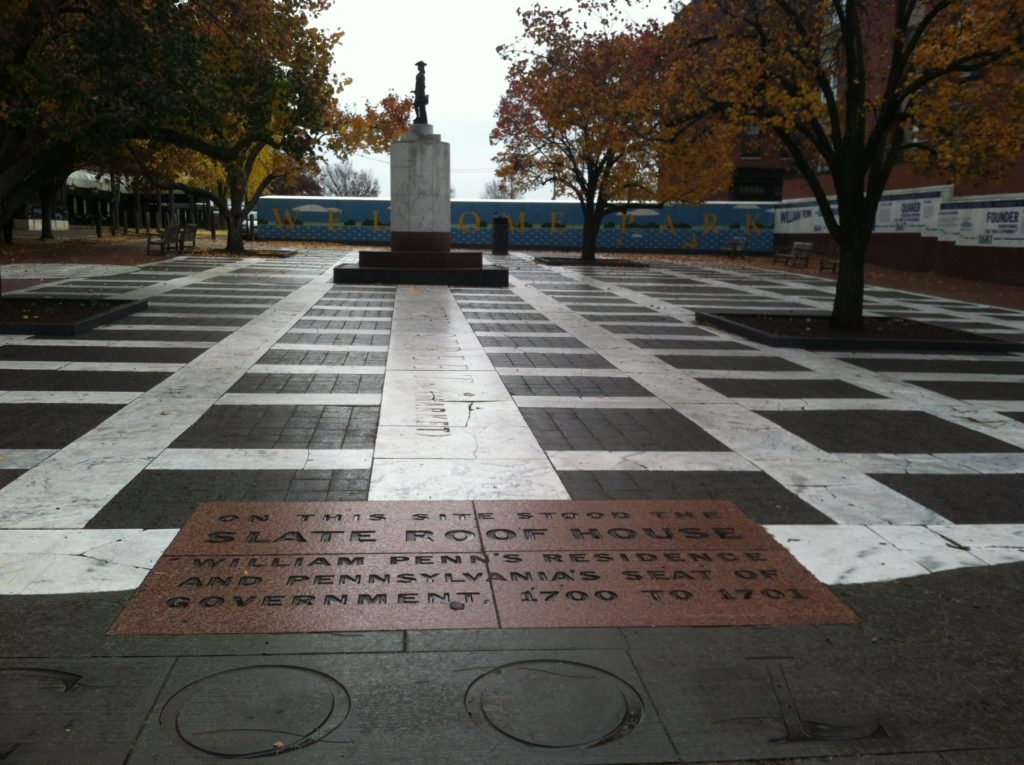As you wander north on 2nd Street in Old City, you’ll notice a relief between the buildings rising around Walnut and Sansom Streets. Just south of Sansom, Welcome Park is a walk-through, open-air museum that offers a concise history of Philadelphia in various placards and murals. The spot was chosen for its historical significance, which accounts for our ability to trace its usage as far back as 1690. According to Benson John Lossing’s 1850 text The Pictorial Field-Book of the Revolution, the “Slate-roof House” standing at roughly 133 S. 2nd St. was “one of the most interesting buildings in Philadelphia.” It is shown here below in a sketch also taken from Lossing’s text.
The house stood on the southeast corner of present day Sansom Street at a time when it was called Gothic Street. According to Lossing, the house was a popular rental for visiting dignitaries and was the temporary residence of no less than William Penn between 1699 and 1701. His only son born in America would enter the world in this house. Likewise, its considerable comforts would be utilized at various points during the Revolution by future president John Adams, British officers occupying the city (1778) and by a “young ladies boarding school” for a brief time. Hidden City Philadelphia even offers the details to a fascinating chapter in the property’s history when Penn’s son designated a small plot of the land for Iroquois ownership. This modest parcel was known as The Wampum Lot. The building eventually came to house a changing series of retail businesses as seen in the Library Company of Philadelphia photo from 1854, shown here below.
Another picture, taken from exactly 10 years later and borrowed from the Free Library of Philadelphia, shows that it was occupied by a multitude of different retail businesses, most notably John C. Hughes: Sign Painter.
This considerable wealth of historical and commercial significance was not sufficient to save the decaying building from demolition as it approached its bicentennial. According to U.S. History.org, outcry by preservationists could not prevent the slate-roof house from being torn down in 1867. It was replaced, according to Hidden City Philadelphia, by the Commercial Exchange Building. Slightly shorter lived than its 200-year predecessor, it burnt down after one year. It was rebuilt in 1870 and, thereafter, used as the home for the Chamber of Commerce. This is shown here below in the image taken from G.W. Bromley’s 1875 Philadelphia Atlas.
The Commercial Exchange Building is shown here below in an undated photo from Hidden City Philadelphia.
The Chamber would operate from this location until 1901, when an issue of Telephone Magazine projected that the growing Keystone Telephone Company would take up occupancy of the building later that spring. Hidden City reports that Keystone held residency until selling out to Bell Telephone Company in 1944. Bell closed up shop in 1961, once again leaving the space to fly-by-night retail occupancy and decay. The photo below shows the building in 1970, now occupied by a less-than-notable Garden Hose Accessory store.
The building would be abandoned, condemned and dismantled by 1976. According to U.S. History.org, 1982 would mark both the 300-year anniversary of Philadelphia’s founding but also the reemergence of this space in its present day form. Welcome Park, along Sansom Walkway, is not just a museum dedicated to Philadelphia’s history but also the site of the Ritz and the popular Pagoda Noodle Café.
–David Tomar

